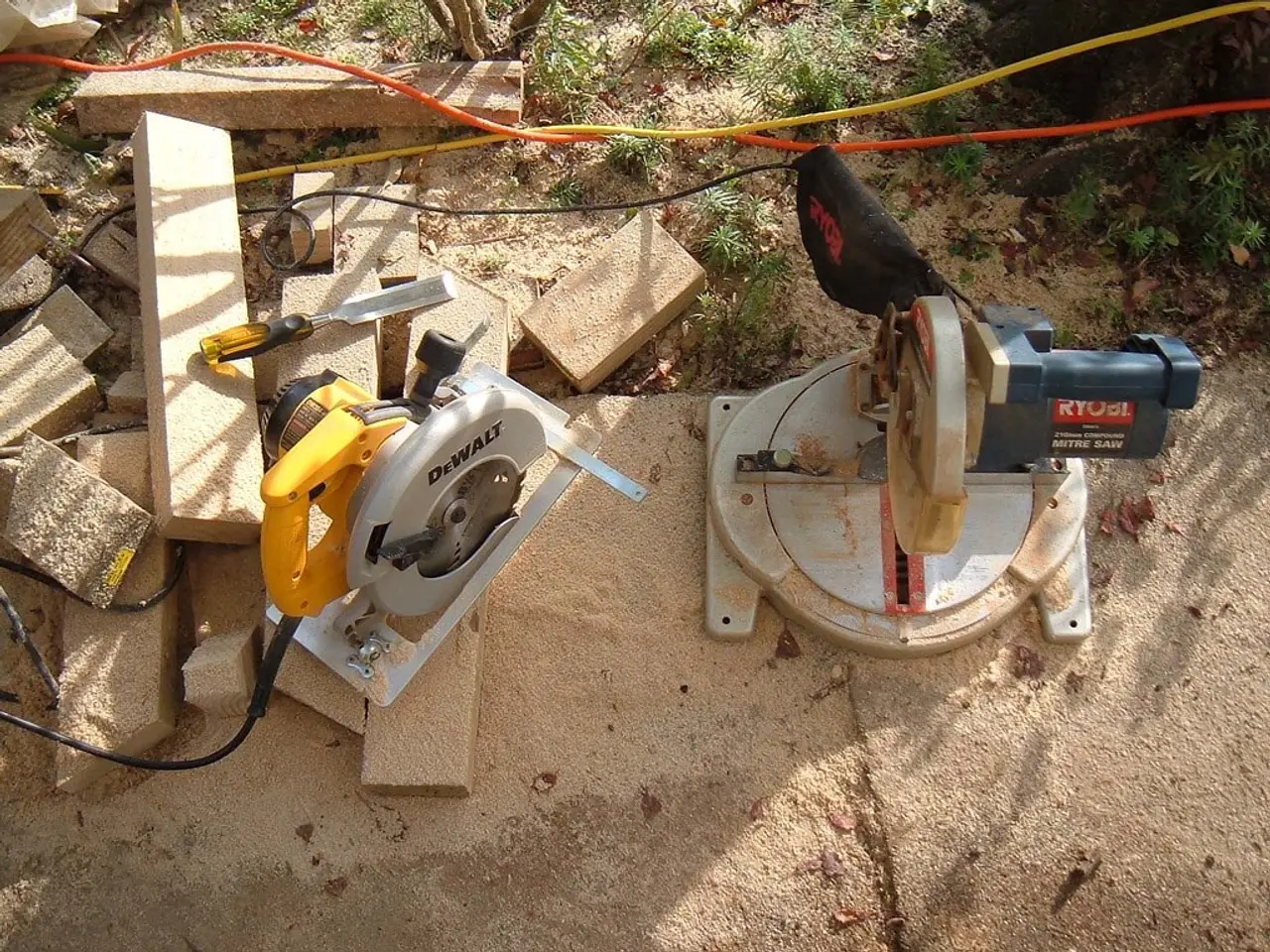Effective Guide for Managing a Circular Saw: 14 Clever Techniques for Precision Cuts
A circular saw is a versatile power tool commonly used in DIY projects for quick cuts in timber and boards. Whether you're a seasoned craftsman or a novice, handling a circular saw requires care and understanding to ensure safety and achieve the best results.
Safety is paramount when using a circular saw. Second-hand timber may contain nails that could cause accidents, so be cautious when handling such materials. Always wear safety glasses or goggles to protect your eyes from debris.
When using a corded circular saw, a cable reel extension is recommended to ensure the cable leads away from the saw. It's also crucial to have both hands on the saw when cutting and ensure the saw guard is on and working correctly.
The teeth on circular saw blades point upwards, creating a smoother cut on the underside of the wood, not the face that will be displayed. The width of the circular saw blade should be considered when making cuts, as different teeth produce different width cuts. For efficient and clean cuts, set the saw blade depth 3mm deeper than the materials being cut.
To start a cut accurately, touch the blade lightly to the wood before starting, and pull back and lower the blade onto the mark when cutting an angle. Practicing and using tools like the Kreg Circular Saw Guide can help ensure straight cuts when using a circular saw.
Different circular saws may have different safety features, so it's essential to familiarize oneself with these. Dull, blunt, or twisted circular saw blades, as well as knots, splits, or cracks in timber, can cause kickback. If kickback occurs, let go of the trigger, relax the grip, and wait for the blade to stop by itself. Replacing a circular saw blade regularly is important to prevent kickback and ensure a clean, precise cut.
When cutting a piece of timber spanned across two sawhorses, the timber may squeeze the blade, causing kickback. To avoid this, move the timber so the cut is over the edge of one of the sawhorses.
When it comes to choosing a circular saw, high-quality brands like Delta, DEWALT, and Bosch are recommended for DIY projects. A quality branded corded circular saw with a cutting depth of 75 mm and a MakPac carry case is another option. For those on a budget, there are affordable corded and cordless circular saws available. A budget corded electric circular saw with a max cutting depth of 62mm and a laser guide is available, while a budget cordless circular saw with a 4.0Ah battery and fast charger is also an option.
Most circular saws come with a rip guide that can be used for straight cuts on smaller pieces of wood. Using these guides can help ensure precision in your cuts.
In conclusion, with the right knowledge and precautions, a circular saw can be a valuable asset in your DIY projects. Always remember to prioritize safety, choose the right blade for the job, and practice proper techniques to achieve the best results.
Read also:
- Proposal for a Worker Radiation Protection Directive Requested by Commission
- Sharply rising fatal accidents in Mainz 2025: A 144% surge in deaths - authorities plan to enhance safety for the elderly population
- Exploring the Digestive Benefits of Fermented Foods
- Senator Rasha Kelej welcomed Maldives First Lady at the seventh installment of the Merck Foundation's First Ladies Initiative Summit to discuss collaborative healthcare programs.




